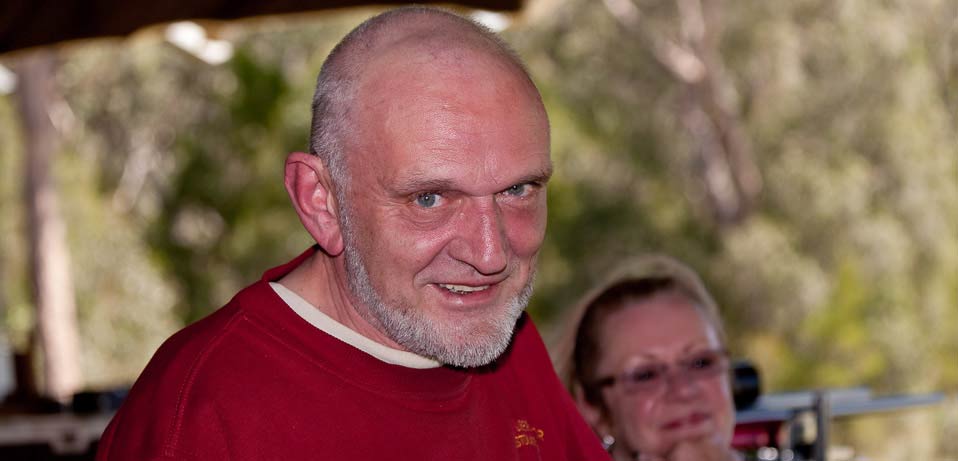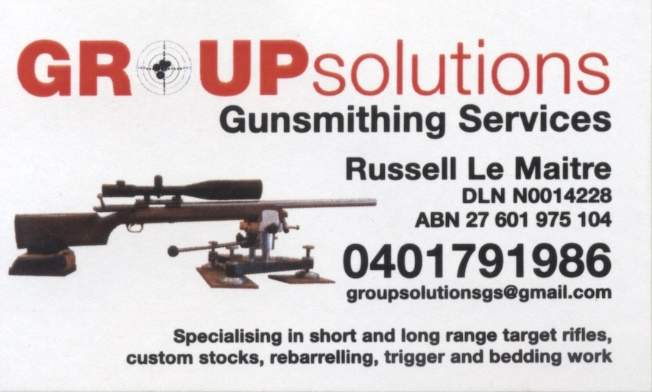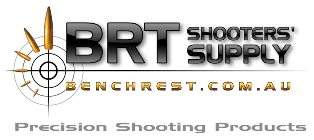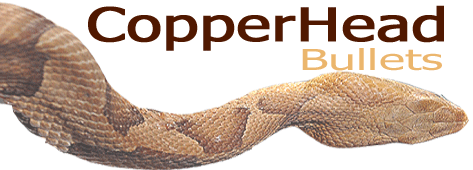Pete van Meurs has agreed to be the first, so before we begin the interview, here is a little bit about Pete:

In the last 10 years Pete has finished top 3 in a fly match on 19 occasions. He has finished first 11 times, 8 of which were in light gun. He has taken the prize for smallest group and best target 4 times.
Pete was light gun Shooter Of The Year in 2007 & 2009 and heavy gun Shooter Of The Year in 2010. Pete still holds the Canberra range record 500m small group (.960” shot with a heavy gun in 2002), the light gun total score record at Eagle Park (246 in April 2010) as well as the highest scoring light gun target at Belmont (59.01 in Nov 2007).
Pete and Lee-Anne run Pro Cal Trading, a gunsmithing and firearms equipment supply business from Bannockburn near Geelong in Victoria.

Pete, can I ask how you came to get involved with the shooting sports?
Like many others I started as a field shooter including a liking for very accurate fox rifles. My first competitive shooting was with the Big Game Rifle Club, with which I am still involved as a member for life. About 12 years ago a regular client, Fergus Bailey, got interested in the 500 metre Fly and had me build him a rifle. He subsequently leaned on me to help boost the numbers at the first Vic champs Fly. This I did using a Schultz & Larsen 308 field rifle. This thing had a 22″ barrel and was sighted in with PMC 150gn soft point factory ammo – not quite ideal for the ‘Fly’. On a rather breezy day at Eagle Park I only managed about 10 scoring shots and around 30 points. None the less I was hooked! One thing lead to another and in time I became a committed benchrest shooter.
Lee-Anne also is a shooter of some repute, it could seem like a marriage made in heaven….did she become interested in shooting before or after meeting you and how do you regard your skills compared to hers?
Although Lee-Anne has held a shooters licence for many years this was done primarily to cover ourselves legally as she had access to my fire-arms, so obviously this was all after we met. When she showed an interest I prepared a little single shot 22LR and set her up at the range to shoot at a little swinging piggy at 25 meters. I left her with 3 part packets of cheap ammo whilst I sorted out a 223Rem fox rifle. When I checked her progress an hour later she was having a ball, hitting the piggy 9 out of 10 shots. However I was dismayed to find that she had exhausted the original ammo and had reached into my ammo box to randomly grab two more packets – you guessed it, both were full boxes of expensive target loads! Later that day I asked if she would like to shoot the 223 and with my assurance that the recoil was negligible she assented. After a few shots to get the feel of it I had her shoot a group for the first time in her life. Well that first 100 yard group went under an inch and she was ecstatic. She was hooked and soon began to shoot bench rest with me and eventually the Fly as well.
As for the second part of your question – I refuse to reply on the grounds that it might incriminate me! I will let others make their own judgement but will add that it is not unusual for her to beat me.
You’ve been shooting for a long time now and have won many events. How do you keep your motivation levels high as it can’t be easy to travel to all the events you and Lee-anne attend.
Interesting question! I suppose that over all those years it was simply a passion to pursue some degree of mastery in the various benchrest disciplines. Experimentation with equipment was also a driving force – one simply had to use the gear in a match to see how well it worked. However in recent years we have reduced our travelling as I am finding the driving to be a bit of a chore these days. Also, as I have achieved a reasonable level of success, I find myself less motivated to win and am prepared to sacrifice some results in order to spend more time assisting at various venues and spending time to help younger guys get better results.
You shoot both light and heavy classes and seem to use a variety of rifles. Do you have a favourite overall calibre and if so why?
It should not surprise you if I nominate the 6mm Dasher. This little wonder allows me to achieve the velocity that the standard 6mmBR would give if we could use a little more pressure – the otherwise excellent Lapua cases are just a bit too soft. It’s easy to load for and gives good barrel life. Most any of the quality bullets in the 103gn to 107gn range will produce stunning accuracy. Our rifles all shoot the same load and all have the POTENTIAL to shoot .1moa (making it happen is another matter). Many times we have seen 3 or 4 successive shots go into under an inch at 500mt and every lost shot can be related to the prevailing condition. This absolute consistency is often lacking with many other cartridges (the ones that will throw a shot sometimes that is totally out of proportion or direction to the conditions).
What do you consider the cartridge and bullet combinations of choice?
After many years I have arrived at some conclusions. Firstly though we need to consider some terminology. The term ‘Very Low Drag’ is a bit misleading – it can mean a bullet is ‘VLD’ for it’s weight in some particular calibre or it can mean that a bullet is ‘VLD’ for it’s calibre (that of course tends toward the heavier and longer bullets in any given calibre). I prefer to run with the second option since, for example, a 155gn .30 cal bullet can be described as VLD but be next to useless in our game no matter how fast you drive it. The result of my observations is that the highest BC (ballistic co-efficient) bullets are the ones to use when wind drift is un-predictable but you will often get that un-explained ‘flier’ as mentioned earlier. I believe this is due to the longer time the bullet spends in a yawing attitude in the early part of it’s travel making it more susceptible to variations in condition that may go un-noticed or be invisible. But, in addition, these real VLD bullets will rarely give the same ultimate accuracy as a ‘Fairly Low Drag’ bullet. New term there for people to get their heads around – ‘FLD’ !! The VLD and FLD bullets seem to give their best accuracy somewhere in the range of 2,800 to 3,000 fps. Check the chart below and ponder on what has been used to win and place in matches at the various ranges and in what conditions –
FLD VLD
6mm cal 6BR – 6X47Lap 6X47Lap – 6mm/284
Around 105gn 115gn
6.5mm 6.5X47 – 260Rem Typically 6.5/284
120 – 130gn 140gn
7mm 284Win – 280Rem Ackley Any number of big cases
Typically 168gn 175 -180gn
.30 cal 30/284 – 300Win Mag 300 Ultra & big Wildcats
175 – 210gn 210 – 240gn
Note that these combinations will usually fall into that ‘magic’ velocity slot of from 2,800 to 3,0 00.
This is a simplified version of my own full chart should anyone want to pursue the issue.
In conversations with you previously you’ve mentioned you shoot many disciplines other than 500 fly. What are they and could any of them be good as practice for the 500?
As mentioned earlier, the BGRC was a passion for many years but the issues with my right shoulder prevent me from competing in all bar the novelty classes. Many will have noticed that I often shoot ‘Fly’ off the left shoulder or from a ‘sit-behind’ set-up for the same reasons. I did a bit of ‘F’ class shooting in the NRAA discipline but that is now restricted to the Geelong club where I can shoot from a bench – the shoulder and back are not ‘prone’ friendly (Still hold the record in ‘F’ std with 60/60/59 at Geelong, shooting prone – it’s been equalled but not bettered). Aside from this, Lee-Anne and I used to be active in rimfire but a combination of excess travel, too many disciplines and most importantly the ‘frustration factor’ that is common in rimfire has seen that drop right off! As many will also be aware we both compete in the 1,000yd events in Canberra on the day after the ‘Fly’ shoot but we don’t travel for those matches specifically. Finally, we are both still reasonably active in traditional benchrest (100 & 200 yards) but as the ‘Fly’ shoots increase in number any clash of dates within our travel range will always go to the ‘Fly’. As it happens, in traditional BR, Lee-Anne has two ‘Screamer’ patches – one from rimfire and one from centrefire to her credit and holds the record for the smallest group ever shot at 100 yards at Eagle Park in a registered match (or even in club events) – Super-Shoot 2010 – 0.092″. Damn it, I am still without a ‘Screamer’ patch. Although I managed a little joy over the years I have found it very hard to place consistently in BR as the slightest lapse can put you out of the running.
Now to answer the second part of your question – All disciplines can teach you something about accurate shooting however the most closely related is ‘F’ class in the NRAA since it is always from at least 300 yards. Problem here is that the target is relatively easy and is scored only for points (group size is not of consequence) and the flags are those big floppy red and yellow things that tell you bugger-all. I suggest that 500mt aspirants shoot some short range BR or some rimfire to learn how a wind-reading error can burn you badly so as to emphasise the importance of “a slight aiming error beats the shit out of a flag reading error”. Bottom line here is that the last thing you should register in your eyes as you shoot is the flags!
Shooting so many matches takes a lot of time. Do you set aside any load development time and if so what is your process?
Mike, I seem to spend so much time at the range that others have asked if I have a home to go to! Problem is that most of my range time seems to be farting about with new ideas rather than ‘fine-tuning’ of existing gear. As the 6mm Dasher is our primary cartridge in LG and a stand-by in HG all testing is to check if our latest Maddco barrel will shoot with our standard load. If not, it is put aside for a future project. By now you will have guessed that I use nothing other than Maddco if possible.
Part 2 – All range work is done with sized and primed cases needing only a powder measure and arbour press /seating die set to produce ammo on the day (powder measure/powder weight settings are pre-determined). I will have narrowed down the powders most suited to any given trial and also the powder weight range to try. As best I can I test in a direct cross-wind and merely check the vertical spread using 3-shot groups until I think that I am close to the mark, then switching to 5-shot. To do any such testing without flags is pointless as a ‘calm’ day will always have some unaccountable vertical in it!
To expand a little on this subject, a lot of Dashers, 6 BR’s and other BR variants are turning up on the line, is it rude to ask what that standard load might be?
Since anyone getting started in 500 Fly could do no better than to use the 6mmBR and / or it’s derivatives the Dasher and the BRX, I will elaborate a little. The most popular powder is AR2208 although some use AR2209 in the Dasher or BRX. As my experience is with 2208 I can offer actual load data. Firstly I should point out that this data relates to bullets in the range 103 to 107gn fired in Maddco barrels and my standard choice of primer CCI BR-4. The standard BR will shoot best at around 28 to 28.5gns of 2208 with another accuracy ‘node’ at 30 to 30.5gns. It’s the bigger charge that is most often used and will generally run to about 2850 to 2900 fps velocity, but please approach carefully as it’s close to maximum. The Dasher will normally group best between 32 and 33gns. I load 32.5 grns as my standard load although a well used barrel will be back to BR velocities instead of the 2950 I like to see. I seat bullets with .010 to .015″ jam into the lands, although when jumped .025″ they seem to shoot the same. Interestingly my oldest barrel has enough erosion that my standard ammo has .050″ jump and it still shots fine but is down to 2800fps and of course is a chore to get the copper out of. The comments re the Dasher should apply equally to the BRX as the case capacities are virtually identical.
Please take heed that I use Moly coated projectiles with all of my loads. As such, those preferring “naked” projectiles should stay .5 grn or more below my loads. In addition I remind readers they should work up to these loads progressively.
Editors Note.. Using “Moly” coated projectiles reduces chamber pressures significantly therefore loads for ‘Moly” coated projectiles should never be substituted for loads using “naked” projectiles.
With all loads ALWAYS start at least 10% LOW and work up progressively.
We read endlessly on US web sites about seating depth, neck thickness, powder types, case weighing and even primer weighing. What is your opinion of how far we should go in the pursuit of perfection with our loads?
This will be a bit long-winded but never mind. All I can do is relate my experiences and observations. Firstly seating depth – I prefer to jam in as mentioned earlier but if a barrel will not play the game then I will try at least .020″ jump up to .050″ in some cases. I have no time for farting about close to the lands as you will need to re-test frequently as the throat erodes. Frankly if a barrel will not shoot jammed or jumped it is probably a lemon. The reason I prefer jamming in is that I full-length size my cases every firing in order that the case has some clearance in the chamber which allows the bullet to self align with the bore as it is wedged in. It’s a case of the tail wagging the dog but it works. It’s also important to F/L size if you do not neck turn to allow things to self-straighten. Onto the subject of neck turning. This will never do any harm and is certainly important if you wish to neck-size only (why do I not neck turn my Dasher cases? Because there are 1,000 of them!). In some instances where the chamber neck is a bit close in size to a loaded round diameter I will grade out those cases that have excess neck wall variation. In some calibres I do neck turn as it may be dictated by the reamer dimensions but these are usually calibres I do not shoot often and hence can get by with 100 cases. Other case prep is up to the individual. Uniforming flash-holes has the benefit that it minimises the risk of bending de-capping pins but not much else, in fact since I usually load ‘hot’ I prefer to see them as small as possible to minimize pressure transmission to the primer cup. Uniforming primer pockets is not something I bother with unless the only available brass is a bit shitty in this regard. I have never found variations in case weight to have any influence at all. However if one wants to do all the above go right ahead as it could be a confidence booster. Weighing primers is best left to those whose life is otherwise so boring as to give them something to do. Weighing bullets to isolate a dud could be useful but don’t stress about .5 grn this way or that.
Checking bullet ogives is also pointless unless for some reason you opt to seat close to the lands – if it’s jammed or jumped it will not matter. Checking run-out of loaded rounds is another thing I never found any benefits in. If you use a decent bullet seater they will be close enough .
You mention previously that a powder measure is all you need at the range when testing which seems to imply that absolute accuracy with powder weight, in your opinion is not essential. Could you enlighten us a little more on this subject!
If one feels the need to individually weigh powder charges then by all means do so. I certainly do not have the time nor has my testing ever revealed any tangible benefits across the board. Over the years I have fired countless shots over a variety of chronographs and learned that low
extreme spread did not necessarily translate to small groups. I once got a bug to measure velocity at the target as well as in front of the muzzle( for reasons that I can’t remember) and got some real eye-opening results. All shooting was done in a direct cross wind to minimize the influence of the wind. The relationship between the two sets of figures was all over the place. In 5 shot strings there were high and low velocity shots trading places, no correlation of extreme spreads – everything you would imagine should not happen! Blew away a bunch of pet theories in one afternoon. The conclusion I have come to is that chronographs should only be used to satisfy ones curiosity about the approximate average velocity of a load!
Variations in powder charge should always be viewed as a percentage variation rather than some set amount. I work to plus or minus 1% which means in 30gn loads +/- .3gn. The Harrell measures I use are capable of giving this +/- 1% or better. Obviously the coarser the powder the harder it will be to stay in the ball-park, but mitigating that we have the fact that the coarser the powder the more likely it is to be used in larger cases and we should be able to stay in +/- 1%. The Harrell also has a very good micrometer which makes it a joy to use and settings are easily recorded. My Dasher load of 32.5gn 2208 is equivalent to a setting of “57.5” on my example. Once in a while I might wish to double check, in which case I drop say 5 charges in the pan together and take the average of the total weight.
Most of us love to chat about the physical components of our rifles, ie, actions, barrels, scopes, bullets etc. How important is the selection of these bits and pieces?
The 3 ‘B’s apply – barrels, bullets and butt-nuts. Assuming that a rifle has a reasonably true action and is reasonably bedded in a reasonable stock and fitted with a scope that has proven to hold it’s point of impact then it should be reasonably competitive. Action ‘stiffness’ is over-rated by many (especially the ‘Fullbore’ mob to whom it probably matters least). Actions and stocks can have a bearing on shooter comfort and speed of cycling for successive shots but rarely any significant effect on sheer accuracy. No harm in getting as many parts of the rifle as near perfect as possible but the bottom line is that if the barrel is no good or the bullets are sub-standard then you will never be in the hunt! Do your testing at close range with as many flags as possible to eliminate as many variables as you can. I prefer to test at about 150mt as this is far enough out for VLD bullets to have stabilised and close enough that I can read the flags well. If all efforts to shoot under .250 fail then the barrel will be replaced. You can expect one in ten barrels to be less than fully competitive and with no recourse to the maker you have to be prepared to absorb the cost. If this prospect frightens you then go to a different sport – target shooting is not cheap!
Scopes are one of the most debated components. I find that around 35X gives me a good compromise between resolution, magnification and field of view. Personally I use either Nightforce 12-42X or Weaver T-36. One needs to be a bit lucky to get a really clear Weaver (the odd one can be a bit murky). Sheer numbers favour the Nightforce with a few March starting to appear, although the cost is somewhat daunting. At this stage the European scopes are rarely, if ever, used since they do not offer the same magnifications or are simply ridiculously expensive. Other than the Weaver a more modestly priced alternative might be the Sightron 10-50X but I find the resolution to be inferior for our purposes.
Can you offer any advice to those who might have equipment capable of shooting small groups but who are unsatisfied with their scores at matches.
Assuming the shooter has an accurate rifle with a fast twist barrel using reasonably high BC bullets then it’s back to reading the flags. Best thing is to have your own flag set and experiment with their placement and then practice at say 300mt. Make a point of firing shots on various conditions to see where it takes the bullet. Once you are consistently shooting well-centered groups move out to 500mt and practice some more. There are many different styles of flags in use and they all have their merits – choose what you think you can interpret most easily. Never forget that the first 50 to 100mt is often the most critical – if the bullet is unduly affected close in it will be way out further down-range.
What developments do you envisage for the future?
Another good question Mike. There are two observations I have made and they are inter-linked. Firstly, there are more people wanting to shoot both classes (as they should be entitled to) and at this stage they are often doing so with a single LG rifle (which is also fine by me). Secondly, I note these same people are often reluctant to foot the bill for a full-on heavy gun and it’s attendant special rest and bags. The solution that I continue to promote is that if one wishes to shoot HG with a bigger calibre then put together a ‘middle-weight’. The rifle is nothing more than a seriously over-weight LG in some bigger bore size. It still uses a 3″ fore-end and works from existing rests and bags – often described as ‘Cruiser Weight’. I believe we will see an increase in this area as the main development in equipment since it is so cost-effective.
500 fly seems to be enjoying a growth spurt. Is there anything we can do to ensure this continues?
I have found that 500 metres is often considered by new comers to be too daunting, especially if they do not have the most appropriate gear. Using the full-size target at 300 will usually see most shooters keep their shots in the scoring zone and hence encouraged to come back and have another crack at it. Let’s face it, there are any number of target/tactical 308 Win rifles out there, but they are not going to be competitive at 500 whereas they will be fine at 300. Also, many of these rifles have inadequate optics for the longer range but will still enable shots to be seen at 300.
At our range we have scheduled a number of 300mt shoots and are getting a few new faces competing, which will hopefully translate into more guys having a go at the 500.
I would encourage all ranges to schedule as many 300 meter events as possible.
So there we have it, I would like to thank Pete for his time and co-operation in conducting this interview.





